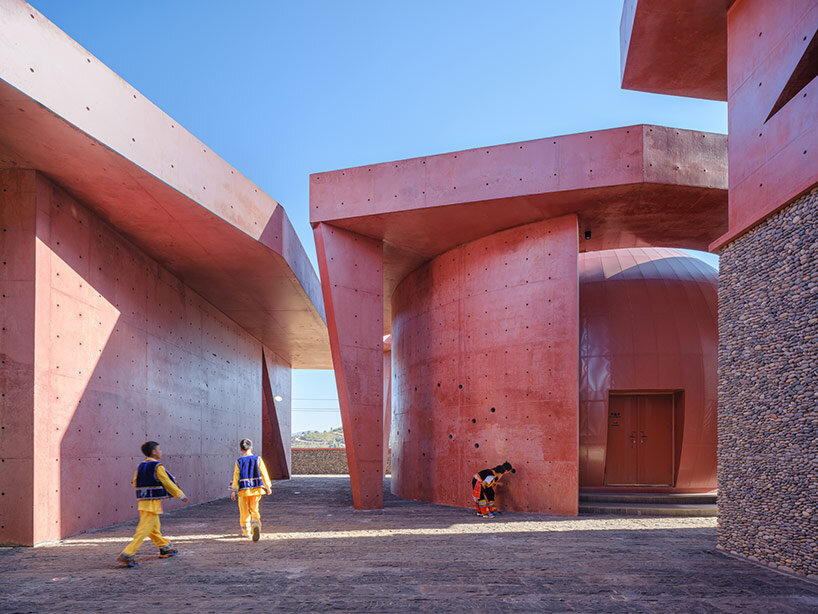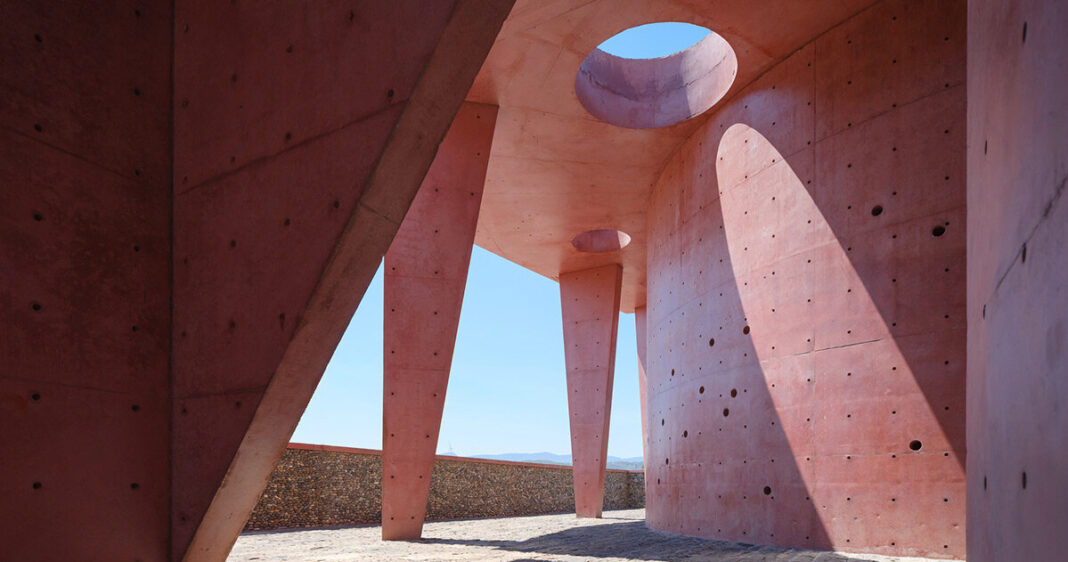drawing from Yishala’s topography and village form
Amid the rugged terrain of Panzhihua, China, the newly completed Red Village Observatory by architecture studio TAG offers more than a place to gaze at the stars. It’s a sculptural ode to vernacular architecture, filtered through light, shadow, and raw concrete. Tucked into the foothills outside Yishala Village, a place defined by its tumbling layers of terraced fields, the project merges the spirit of its setting with an architecture that is both grounded and poetic.
The initial impression of Yishala — tight alleyways, cascading terraces, and shifting shadows — sets the foundation for the project. The design captures this fragmented, layered experience by breaking down the building’s program into four compact, stepped volumes. Auxiliary functions are ‘backfilled,’ stairs and walkways mimic the undulating terrain, and pathways link the volumes together like a modern reassembly of the village itself.
images © Trace Image
Red Village Observatory embraces imperfections of raw concrete
Unlike many concrete buildings in China which are typically polished by specialist crews, Red Village Observatory was built by the architects in collaboration with local craftspeople. Budget constraints became a design ethos: no patching, polishing, or pretending. The rough red concrete wears its birthmarks with pride — uneven joints, color variations, surface imperfections — all of it integral to the raw architecture.
With its Red Village Observatory, TAG treats sunlight not as a passive presence, but as a building material. Angular roof overhangs cast long, knife-edged shadows onto the concrete, shifting with the sun’s path. Gaps between slabs become narrow skylights, carving time into the walls and floors below. The ephemeral geometry of light is as legible here as any physical structure.

Red Village Observatory is located in the mountainous terrain surrounding China’s Yishala Village
TAG reframes windows as elemental openings
To illuminate its Red Village Observatory, TAG makes use of irregular cut-outs that break away from the logic of window frames. These are openings, not views — portals for air, light, and atmosphere. One dramatic gesture tears open the eastern wall of the front hall to frame the rising sun over the Daliang Mountains. Inside, a constellation of circular holes in the concrete casts a morning constellation onto the red walls, transforming sunlight into a kinetic pattern of dots.
Grounded in the textures and topography of its environment, Red Village Observatory by TAG refuses polish in favor of character. Its rough surfaces and jagged shadows recall the rhythms of village life and mountain light. It’s a building that engages in conversation with its site, reinterpreting the vernacular through concrete, sunlight, and sequence. In a place where light cuts through mountain gaps and concrete echoes the color of the soil, the project is a celebration of both the earth and the passage of time.

a constellation of irregular wall perforations scatter light inside the structure

the architects draw inspiration from traditional courtyard dwellings and terraced fields

the structure is built with rough, red concrete poured by local construction teams

